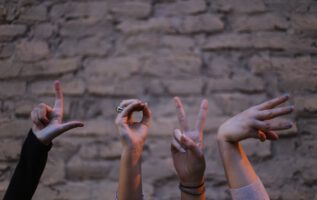If we guide our gaze along the contrasting boundaries of color and light, we perceive forms and, through their transformations, movements at the same time. The motor cortex sends control instructions to the eye muscles that guide our gaze, which are comparable to the impulses sent to our fingers, hands, arms and legs. However, we cannot recognize the “structure of the tactile world” simply by analyzing our eye movements. Our brain also needs the structural information of the retina for this.
In terms of evolutionary biology, our eyes have developed into a particularly powerful “skin area” that forms an integral part of our sensitive body shell. While the skin areas of the body convey the nature of tactile matter to us via sensations of pressure, touch, vibration, pain and temperature, the color and light sensations of the eyes allow us a much faster, safer and more efficient “contact”. A large proportion of the surfaces and materials become visible to us via the excitation profile of the retina as soon as we can trace this back to a reference in the “texture library” of our visual space. The form and material structure of the visual space therefore forms the memory reference through which we can see the plasticity, temperature, strength and surface texture of things.
The prerequisite for the possibility of “eye contact” is the visual-haptic confrontation with the environment. Wherever we touch something and look at it at the same time, associative links are formed in the form and material structure of our visual space. This acquisition of knowledge is largely implicit, which is usually sufficient for our orientation in everyday life. The design of our living space, on the other hand, calls for an explicit examination of the haptic-visual effects of material surfaces, as we gain an understanding of the functional properties and aesthetic value of all things largely through “visual contact”.


